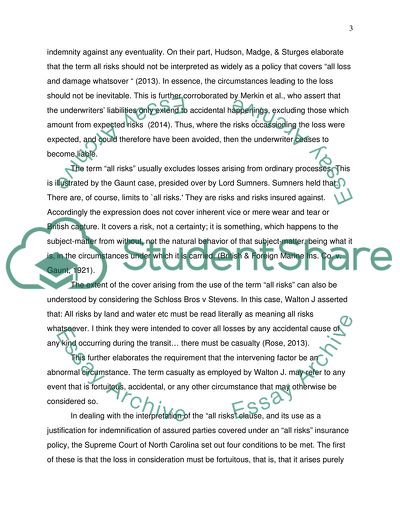Cite this document
(The Institute Cargo Clauses Literature review Example | Topics and Well Written Essays - 1500 words, n.d.)
The Institute Cargo Clauses Literature review Example | Topics and Well Written Essays - 1500 words. https://studentshare.org/law/1842956-despite-being-commonly-referred-to-as-all-risks-the-institute-cargo-clauses-a-of-2009-offer-only-a-limited-degree-of-coverage-in-respect-of-goods-in-transit-and-in-particular-provide-no-indemnity-for-paper-losses-discuss
The Institute Cargo Clauses Literature review Example | Topics and Well Written Essays - 1500 words. https://studentshare.org/law/1842956-despite-being-commonly-referred-to-as-all-risks-the-institute-cargo-clauses-a-of-2009-offer-only-a-limited-degree-of-coverage-in-respect-of-goods-in-transit-and-in-particular-provide-no-indemnity-for-paper-losses-discuss
(The Institute Cargo Clauses Literature Review Example | Topics and Well Written Essays - 1500 Words)
The Institute Cargo Clauses Literature Review Example | Topics and Well Written Essays - 1500 Words. https://studentshare.org/law/1842956-despite-being-commonly-referred-to-as-all-risks-the-institute-cargo-clauses-a-of-2009-offer-only-a-limited-degree-of-coverage-in-respect-of-goods-in-transit-and-in-particular-provide-no-indemnity-for-paper-losses-discuss.
The Institute Cargo Clauses Literature Review Example | Topics and Well Written Essays - 1500 Words. https://studentshare.org/law/1842956-despite-being-commonly-referred-to-as-all-risks-the-institute-cargo-clauses-a-of-2009-offer-only-a-limited-degree-of-coverage-in-respect-of-goods-in-transit-and-in-particular-provide-no-indemnity-for-paper-losses-discuss.
“The Institute Cargo Clauses Literature Review Example | Topics and Well Written Essays - 1500 Words”. https://studentshare.org/law/1842956-despite-being-commonly-referred-to-as-all-risks-the-institute-cargo-clauses-a-of-2009-offer-only-a-limited-degree-of-coverage-in-respect-of-goods-in-transit-and-in-particular-provide-no-indemnity-for-paper-losses-discuss.


